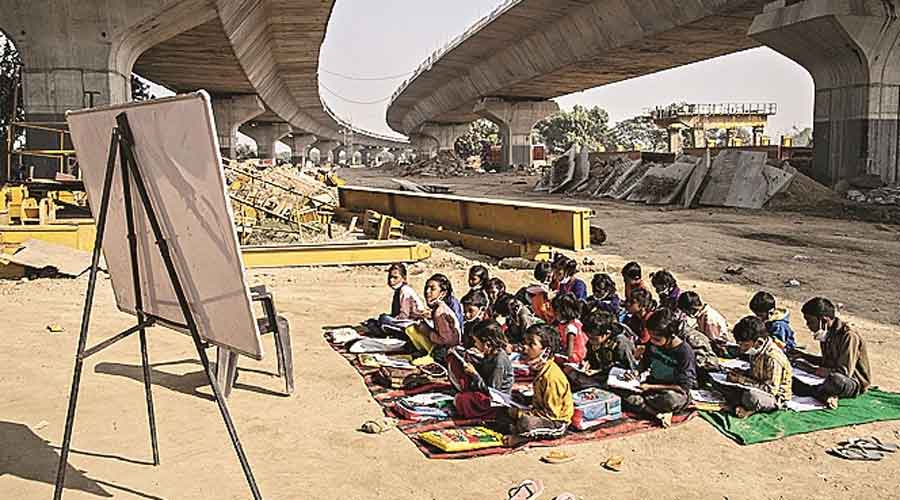
New lesson : PPP model to upgrade govt school buildings isn't a bad idea
Don't Miss
The Editorial Board | TT | 21.02.22 : The news that more children are going to school is most welcome in any Indian state. The government’s role in bringing children from underprivileged households into school and keeping them there is of overwhelming importance. But this requires money. Improving the school system in terms of size, infrastructure, access, quality and affordability for all calls for funds not always available in a state’s coffers. The West Bengal government’s proposal for a public-private partnership model in the sphere of school education can be placed in the combined context of strained purse-strings and an aspirational population. Unused government land and buildings would be given to private investors, while the latter would upgrade infrastructure, provide recurring and non-recurring expenses, fix fees, hire teachers, and decide on the medium of instruction and affiliating board. Predictably, this is being seen by the Opposition as the first step towards privatization, which brings with it apprehensions of education being snatched away from children coming from socially and economically weaker backgrounds. Overturning the goal of expanding the educational base, that is. That the government would ensure the admission of 30 per cent of students through its own channels to address this possibility is not being considered adequate, apart from worries about political bias.
While the fears may not be baseless, the issue could be considered dispassionately too. Reports suggest that the state government is thinking of the PPP (Public Private Partnership) model for the buildings and premises of 79 schools lying unused, since these closed because of a lack of students. That by itself is not a bad idea. West Bengal may be on the verge of a bold step. But to make the move truly beneficial, each aspect has to be closely thought through. Medium of instruction and affiliation, for example, are sensitive matters; is it enough to leave them entirely to private players? As it is, children from marginalized groups have problems following the standard language of the state in class, let alone the English medium. And how is the government going to ensure that PPP schools do not focus on urban areas? The state should set its terms clearly, for it is the government’s goals that must be fulfilled. There is no dearth of private schools. The PPP model should be distinct — with the benefits, both tangible and intangible, balanced for all stakeholders.


0 Response to " New lesson : PPP model to upgrade govt school buildings isn't a bad idea"
Post a Comment
Disclaimer Note:
The views expressed in the articles published here are solely those of the author and do not necessarily reflect the official policy, position, or perspective of Kalimpong News or KalimNews. Kalimpong News and KalimNews disclaim all liability for the published or posted articles, news, and information and assume no responsibility for the accuracy or validity of the content.
Kalimpong News is a non-profit online news platform managed by KalimNews and operated under the Kalimpong Press Club.
Comment Policy:
We encourage respectful and constructive discussions. Please ensure decency while commenting and register with your email ID to participate.
Note: only a member of this blog may post a comment.